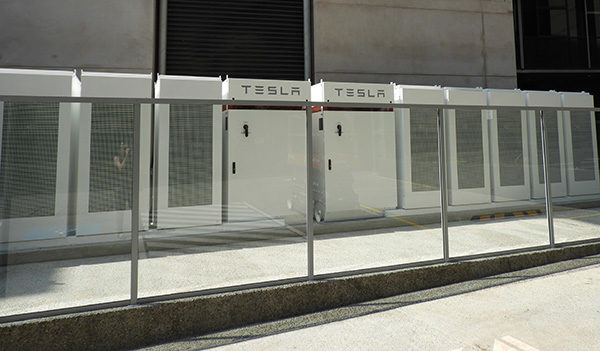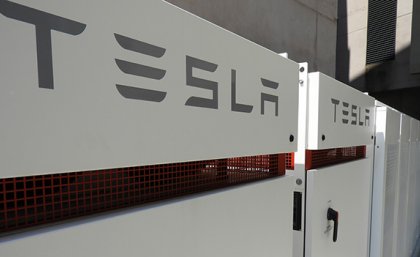The University of Queensland (UQ) recently switched on one of Queensland’s (QLD) largest behind-the-meter battery storage systems, a Tesla Powerpack that delivers 2MWh of energy storage. The Powerpack, part of UQ’s Engineering Precinct Battery system, will form an integral part of UQ’s push to meet its ambitious renewable energy targets.
UQ Chief Operating Officer Greg Pringle (no relation to the great potato chip mogul), said the large-scale battery and inverter system could store enough energy to power up to 10% of the St Lucia campus for two hours. “To put it into perspective,” said Pringle, “the university uses a large amount of electricity to power lecture theatres, laboratories, libraries and other facilities for more than 50,000 students and staff.”
UQ is on track to become the first university in the world to offset 100% of its electricity using its own renewable assets. “This battery storage system will help us to support that ambitious goal,” continued Pringle, “it will complement the Warwick Solar Farm which is nearing completion, and recently won a coveted Australasian Green Gown Award.
UQ’s 64 MW Warwick Solar Farm, which is currently nearing completion, won the Green Gown Award for commitment to sustainability in the inaugural 2030 Climate Action category. UQ purchased the large-scale solar project last November as part of its plan to offset 100% of its electricity needs with renewables by 2020.
The large-scale Tesla Powerpack and inverter system is a $2 million investment for UQ, funded through the earnings generated from UQ’s rooftop arrays. UQ has 50,000 solar PV modules in place throughout its campuses. The Tesla battery is not the first either, as a 1MW/2MWh lithium-ion storage battery is already at work on the St. Lucia campus, as well as a 600 kW/760kWh battery at the Gratton campus.
UQ’s Energy and Sustainability Manager Andrew Wilson said the Powerpack was a key component of the University’s plan to become an active participant in the energy market from the start of 2020.
“We can now trade in the wholesale energy market – the goal is to charge when prices are low and renewable energy is abundant, and then discharge when demand and prices are high,” said Wilson.

To enable energy trading, UQ is utilising a custom control system developed by one of its own engineering graduates. The system monitors wholesale energy prices and automatically controls the trades. “Combined with the other services we are able to provide to the grid such as frequency control during faults,” continued Wilson, “we expect the battery system to earn around $250,000 in revenue each year.”
UQ Chair in Sustainable Energy Futures Professor Peta Ashworth knows energy storage systems are going to play a significant role in the future of sustainability and energy markets. “With the rising cost of electricity, more and more householders are investigating and investing in solar and battery systems for their home,” noted Ashworth. “Looking into the future, with cheaper consumer battery systems becoming available, households many follow UQ down the path of buying and selling energy in real-time.”
UQ’s Tesla Powerpack battery activity can be followed via this link.
This content is protected by copyright and may not be reused. If you want to cooperate with us and would like to reuse some of our content, please contact: editors@pv-magazine.com.









1 comment
By submitting this form you agree to pv magazine using your data for the purposes of publishing your comment.
Your personal data will only be disclosed or otherwise transmitted to third parties for the purposes of spam filtering or if this is necessary for technical maintenance of the website. Any other transfer to third parties will not take place unless this is justified on the basis of applicable data protection regulations or if pv magazine is legally obliged to do so.
You may revoke this consent at any time with effect for the future, in which case your personal data will be deleted immediately. Otherwise, your data will be deleted if pv magazine has processed your request or the purpose of data storage is fulfilled.
Further information on data privacy can be found in our Data Protection Policy.